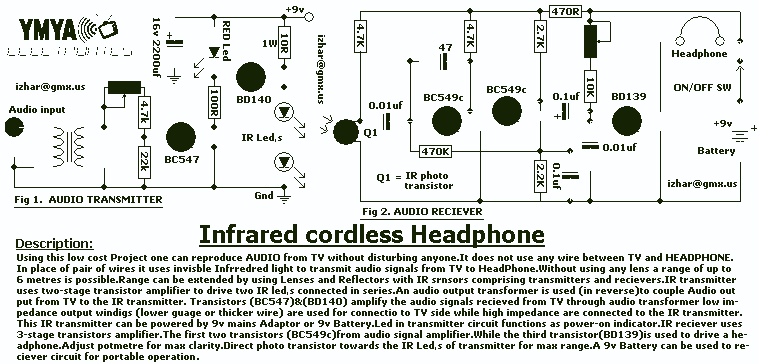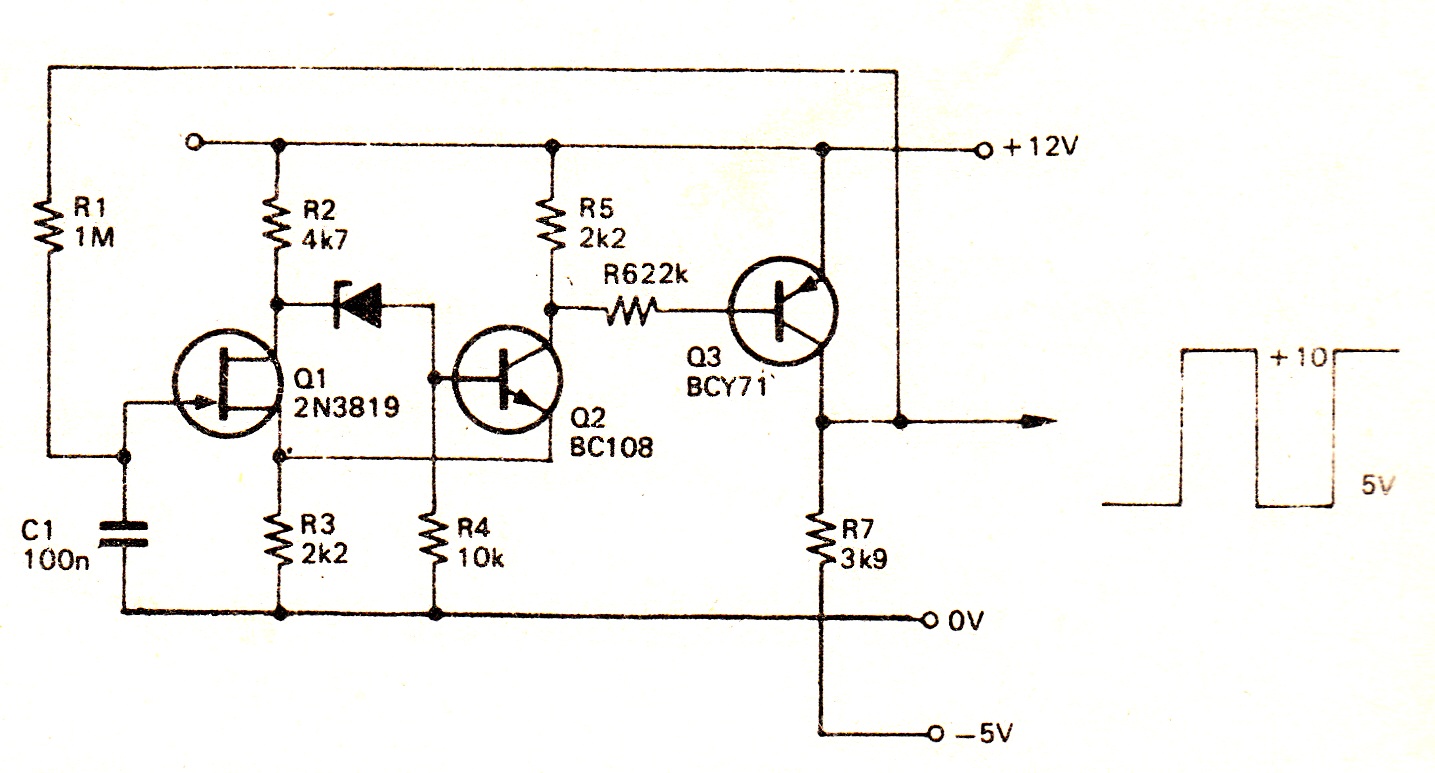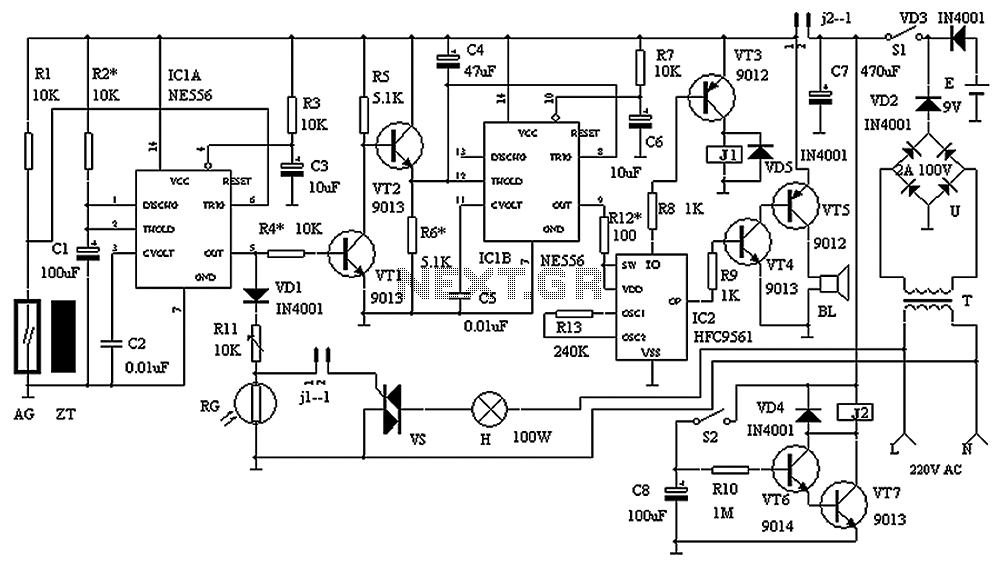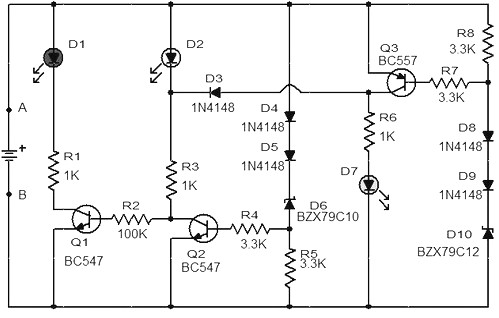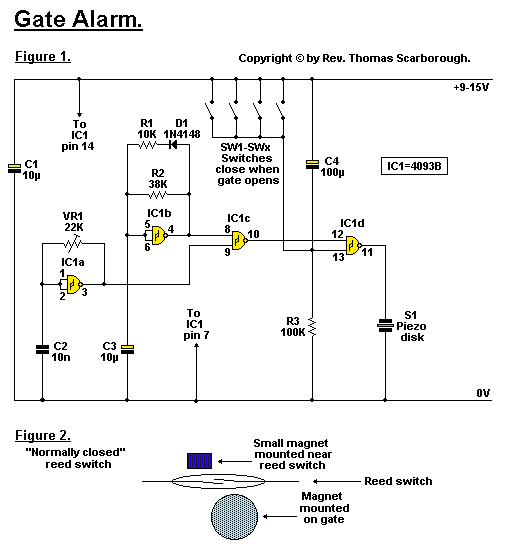
Tremolo Effect Circuit for Electric Guitar or Other Musical Instruments
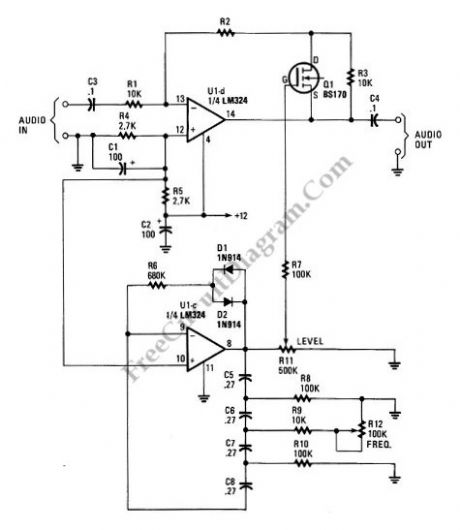
A tremolo circuit is a type of sound effect commonly utilized in guitar effect pedals. This effect is achieved by modulating the amplitude of an audio signal. The shape of the modulating signal can vary and may include square wave, sawtooth, or sine wave forms. When a square wave is employed, the resulting effect produces a knocking-like sound that can be perceived distinctly.
The tremolo circuit typically consists of several key components including an oscillator, a modulation depth control, and an amplifier. The oscillator generates the modulating signal, which determines the rate and shape of the tremolo effect. Common configurations use operational amplifiers (op-amps) to create the oscillator, where the frequency can be adjusted through a variable resistor or capacitor.
The modulation depth control allows the user to adjust the intensity of the tremolo effect. This is often implemented using a potentiometer that varies the amount of amplitude modulation applied to the audio signal. The depth control can be placed in the feedback loop of the amplifier stage, allowing for dynamic adjustment of the tremolo effect.
In the output stage, the modulated audio signal is amplified to the desired level before being sent to the speaker or subsequent effects in the signal chain. The use of different waveforms for modulation results in distinct auditory characteristics. For instance, a sine wave produces a smooth modulation effect, while a square wave creates a more pronounced, choppy sound.
Overall, the design of a tremolo circuit can be tailored to achieve a wide variety of sound textures, making it a versatile tool for musicians seeking to enhance their audio output. Proper understanding of the circuit components and their interactions is essential for optimizing the performance of the tremolo effect in practical applications.Tremolo circuit is a kind of sound effect. We can see this type of effect is applied in guitar effect pedals. Tremolo effect is produced if we modulate the amplitude of an audio signal. The shape of modulating signal can vary from square wave, sawtooth, or sine. When we use a square wave, then the effect produce a knocking-like sound which might be perceived.. 🔗 External reference
The tremolo circuit typically consists of several key components including an oscillator, a modulation depth control, and an amplifier. The oscillator generates the modulating signal, which determines the rate and shape of the tremolo effect. Common configurations use operational amplifiers (op-amps) to create the oscillator, where the frequency can be adjusted through a variable resistor or capacitor.
The modulation depth control allows the user to adjust the intensity of the tremolo effect. This is often implemented using a potentiometer that varies the amount of amplitude modulation applied to the audio signal. The depth control can be placed in the feedback loop of the amplifier stage, allowing for dynamic adjustment of the tremolo effect.
In the output stage, the modulated audio signal is amplified to the desired level before being sent to the speaker or subsequent effects in the signal chain. The use of different waveforms for modulation results in distinct auditory characteristics. For instance, a sine wave produces a smooth modulation effect, while a square wave creates a more pronounced, choppy sound.
Overall, the design of a tremolo circuit can be tailored to achieve a wide variety of sound textures, making it a versatile tool for musicians seeking to enhance their audio output. Proper understanding of the circuit components and their interactions is essential for optimizing the performance of the tremolo effect in practical applications.Tremolo circuit is a kind of sound effect. We can see this type of effect is applied in guitar effect pedals. Tremolo effect is produced if we modulate the amplitude of an audio signal. The shape of modulating signal can vary from square wave, sawtooth, or sine. When we use a square wave, then the effect produce a knocking-like sound which might be perceived.. 🔗 External reference
